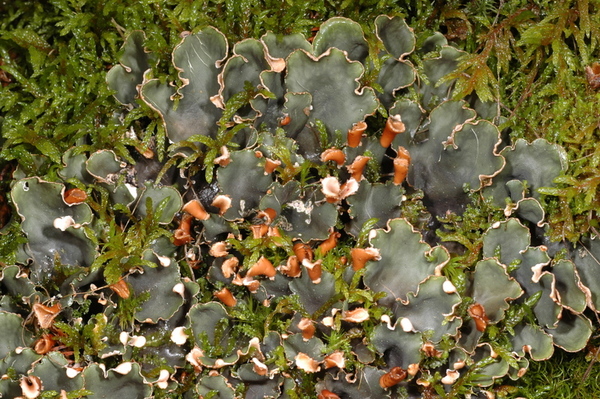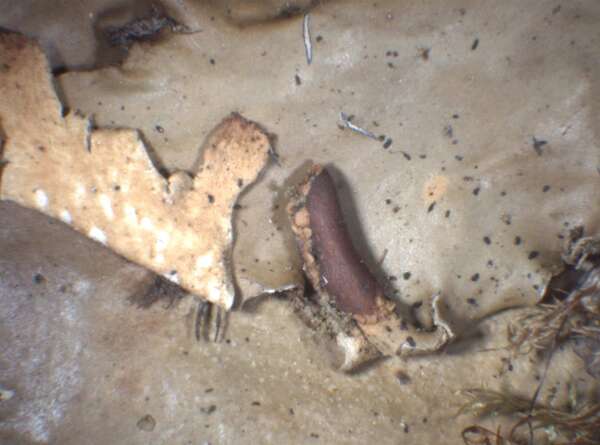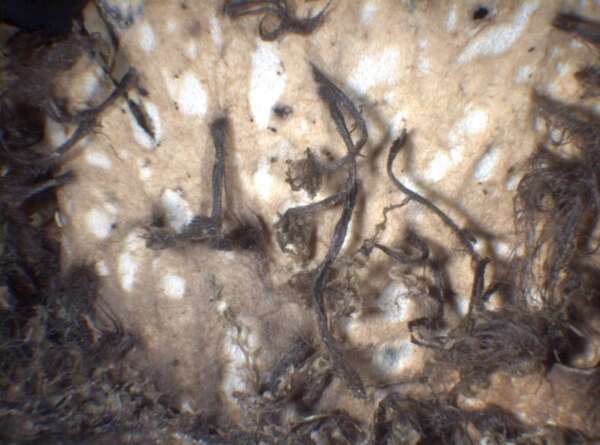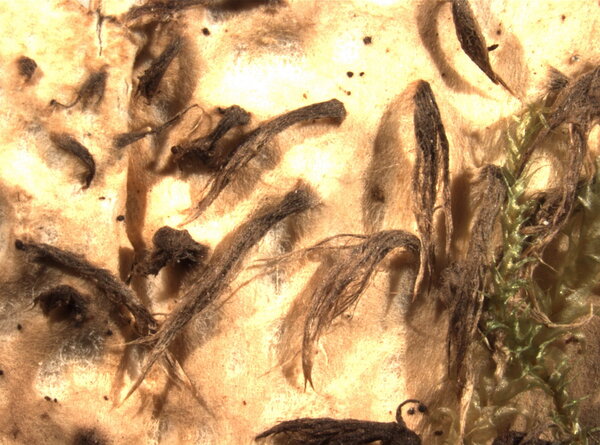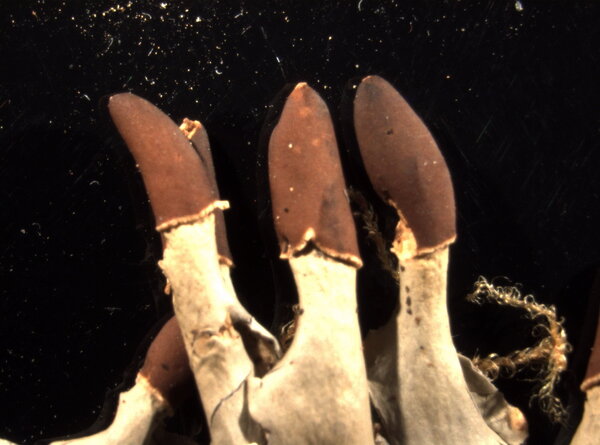Peltigera neopolydactyla (Gyeln.) Gyeln.
Rev. Bryol. Lichénol., n.s. 5: 71, 1933. Basionym: Peltigera polydactylon var. neopolydactyla Gyeln. - Magyar Bot. Lapok, 31: 46, 1932.
Synonyms: Peltigera occidentalis (E. Dahl) Kristinsson non sensu Kristinsson; Peltigera scabrosa var. occidentalis E. Dahl
Distribution: N - Frl, Ven (Vitikainen 1994), TAA (Vitikainen 1994), Lomb (Vitikainen 1994), VA (Vitikainen 1994, Piervittori & Isocrono 1999).
Description: Thallus foliose, broad-lobed, heteromerous and dorsiventral, bluish- to brownish grey when dry, dark bluish grey when wet, loosely attached, forming 20(-40) cm wide rosettes. Lobes elongate, flattened, contiguous, with rounded ends, 2-4 cm wide and up to 10 cm long, the upper surface shiny, smooth, glabrous, with flat to up-turned, undulate edges. Lower surface pale at margins, darker in central parts, with slender to rarely fasciculate, dark, 5-7(-11) mm long rhizines and flat, dark veins. Upper cortex pseudoparenchymatous; medulla white; lower cortex absent. Apothecia frequent, saddle-shaped, terminal, pale to dark brown. Paraphyses simple, distinctly thickened above. Asci 8-spored, fissitunicate, the thickened apex with a K/I+ blue ring, Peltigera-type. Ascospores 3-5-septate, hyaline turning pale brown at maturity, acicular, thin-walled, 50-90(-100) x 3-5 µm. Photobiont cyanobacterial (Nostoc, the cells not in long chains). Spot tests: cortex and medulla K-, C-, KC-, P-, UV-, or medulla rarely C+ and KC+ weakly and fleeting pink. Chemistry: four chemotypes with different combinations of tenuiorin, methyl gyrophorate, gyrophoric acid, zeorin, polydactylin, dolichorrhizin, and additional unknown triterpenoids.Note: a forest floor species, occurring amongst and over mosses, more rarely on rock or on bark, on basal parts of old trees, with optimum in the montane belt; all Italian records are from the Alps.
Growth form: Foliose, broad lobed
Substrata: soil, terricolous mosses, and plant debris
Photobiont: cyanobacteria, filamentous (e.g. Nostoc, Scytonema)
Reproductive strategy: mainly sexual
Commonnes-rarity: (info)
Alpine belt: absent
Subalpine belt: very rare
Oromediterranean belt: absent
Montane belt: rather rare
Submediterranean belt: absent
Padanian area: absent
Humid submediterranean belt: absent
Humid mediterranean belt: absent
Dry mediterranean belt: absent
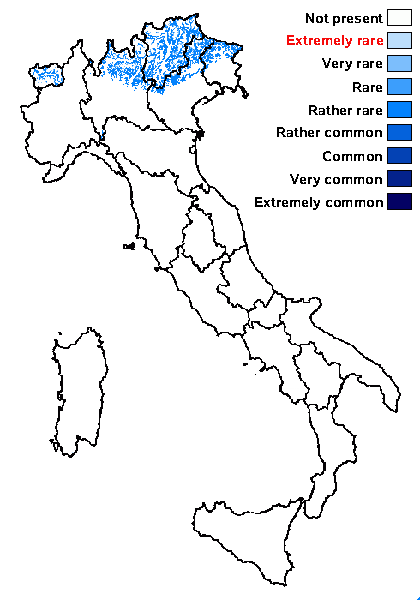
Predictive model
Herbarium samples
Growth form: Foliose, broad lobed
Substrata: soil, terricolous mosses, and plant debris
Photobiont: cyanobacteria, filamentous (e.g. Nostoc, Scytonema)
Reproductive strategy: mainly sexual
Commonnes-rarity: (info)
Alpine belt: absent
Subalpine belt: very rare
Oromediterranean belt: absent
Montane belt: rather rare
Submediterranean belt: absent
Padanian area: absent
Humid submediterranean belt: absent
Humid mediterranean belt: absent
Dry mediterranean belt: absent

Predictive model
| Herbarium samples |
 Index Fungorum
Index Fungorum
 GBIF
GBIF
